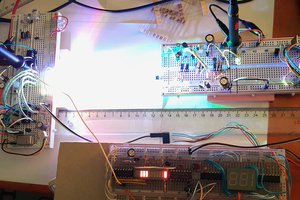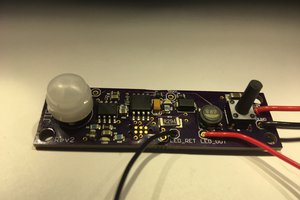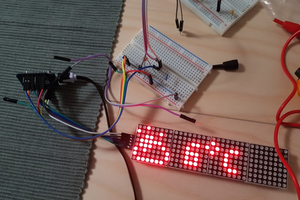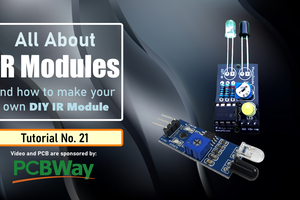Functions of the system:
1.After startup, the analog light sensor will give a brightness of LED according to the light intensity of surrounding environment.
2.If the surrounding light becomes darker and darker, while the LED becomes brighter and brighter.
3.If the surrounding light becomes brighter and brighter, while the LED becomes darker and darker.
4.If the light intensity of surrounding environment is stronger than the analog output value which we pre-set in the program, the LED will go out.
Step 1: Components list

1.ICStation UNO R3 with USB compatible with Arduino
3.Highlight LED light emitting diode
5.Hard jumper wire
7. 5 Voltage DC power supply
8.3 PCS of pins
Step 2: Schematic Diagram

Step 3: Connect the +5V Power Supply and GND of development board to the bread board

The red wire connects the power supply and the black wire connects the GND
Step 4: Connect the analog light sensor with 3P DuPont line

Connect the analog light sensor with 3P DuPont line and connect the pin to the another end of 3P DuPont line.
Step 5: Put the light sensor and LED on the bread board

Step 6: Connect the cathode and anode of components to the common terminal

Connect the power supply end and GND of the components to the common cathode and anode of bread board
Step 7: Connect the signal end of component to the development board

Connect the signal end of analog sensor and highlight LED light emitting diode to corresponding pins of the ICStation UNO R3 development board compatible with Arduino
Step 8: Code of the program design

Specific source program as follows:
int _ABVAR_1_Bright;
void setup()
{
_ABVAR_1_Bright = 0;
Serial.begin(9600);
}
void loop()
{
Serial.print( analogRead(A0) );
Serial.println("");
_ABVAR_1_Bright = analogRead(A0) ;
analogWrite(3, map ( _ABVAR_1_Bright , 50 , 900 , 0 , 255 ) );
if (( ( _ABVAR_1_Bright ) < ( 50 ) ))
{
analogWrite(3, 0);
}
}
 icstation
icstation
 Jovan
Jovan
 roger_archibald
roger_archibald
 Miha
Miha
 Hulk
Hulk